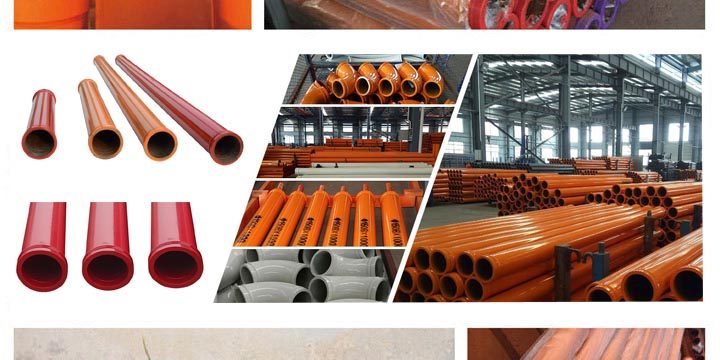The chemical resistance of the Concrete Pump Pipe decreases as the temperature increases. Some chemicals do not affect the Concrete Pump Pipe at room temperature, but when the temperature rises to a certain level, it will cause damage to the Concrete Pump Pipe . Certain chemical conditions must be specified in the chemical compatibility table, especially temperature limits, to determine chemical compatibility.
The Concrete Pump Pipe is one of the important components of a peristaltic Concrete Pump Pipe, and the end user often misplaces the tubing, making it unsuitable for the desired application. Some users even use ordinary pipes instead of peristaltic Concrete Pump Pipe s, causing disastrous consequences. With the increasing number of Concrete Pump Pipe on the market, it is also difficult to select Concrete Pump Pipe.
When referring to the chemical compatibility table, the end user should take each component of the solution, not just the main component, for compatibility check with the pipe to be used. Some acids or solvents can cause enough damage to the Concrete Pump Pipe even after being in contact with the Concrete Pump Pipe for hours or days, even if it is only trace amounts. The end user should check each chemical in the solution to ensure it is compatible with the selected Concrete Pump Pipe tubing.
Many Concrete Pump Pipe suppliers offer chemical compatibility tables. However, engineers should be aware that chemical compatibility tables specific to Concrete Pump Pipe tubing should be used instead of chemical compatibility tables for common tubing.
Peristaltic Concrete Pump Pipes are becoming increasingly popular due to their pollution-free Concrete Pump Pipeing characteristics and the need for less maintenance. However, when designing or purchasing a peristaltic Concrete Pump Pipe system, many engineers often overlook an important component, the Concrete Pump Pipe of a peristaltic Concrete Pump Pipe.
Chemical compatibility: The pipe must be chemically compatible with the fluid to be Concrete Pump Pipeed in order to have good Concrete Pump Pipeing performance and safety performance. With the increasing number of tubing on the market – some peristaltic Concrete Pump Pipe models have up to 15 available tubing – so users can always find a suitable tubing that is chemically compatible with a particular fluid.
Because ordinary pipes have only general contact with chemicals, and peristaltic Concrete Pump Pipe s are in contact with chemical fluids under pressure conditions, the chemical compatibility level of ordinary pipes cannot be equal to the chemical compatibility level of peristaltic Concrete Pump Pipe. Therefore, only the Concrete Pump Pipe should be referred to, not the chemical compatibility level of the general pipeline and related materials, otherwise the Concrete Pump Pipe will be ineffective or damaged and leaked, resulting in damage or dangerous accident of the Concrete Pump Pipe.
There are many types of concrete pump pipes, including wear-resistant concrete pump pipes, thick-wall concrete pump pipes, thin-wall concrete pump pipes, and wear-resistant concrete pump pipes. Many of them are also in the category of machining. The most used ones are stamping, forging and roller processing. , rolling method, bulging method, stretching method, bending method, and combined processing method. Wear-resistant pump tube processing is an organic combination of machining and metal pressure processing. The wear-resistant pump pipe is illustrated as follows: Forging method: The end or part of the pipe is punched out by a swaging machine to reduce the outer diameter. The common forging machine has a rotary type, a link type and a roller type. Stamping: The tube ends are expanded to the required size and shape with a tapered core on the press. Roller method: The core is placed in the tube, and the outer circumference is pressed by a roller for round edge processing. Rolling method: Generally, the mandrel is not used, and it is suitable for the inner edge of the thick-walled pipe. Bending forming method: There are three methods that are more commonly used. One method is called stretching method, the other method is called stamping method, and the third one is familiar roller method. There are 3-4 rollers, two fixed rollers, one adjustment. Roller, adjust the fixed roll distance, the finished pipe is bent. This method is widely used, and if the spiral tube is produced, the curvature can be increased. Bulging method: one is to place rubber in the tube, and the upper part is compressed by a punch to make the tube convexly formed; the other method is to form a hydraulic bulge, fill the middle of the tube with liquid, and the liquid pressure drums the tube into a desired shape.







